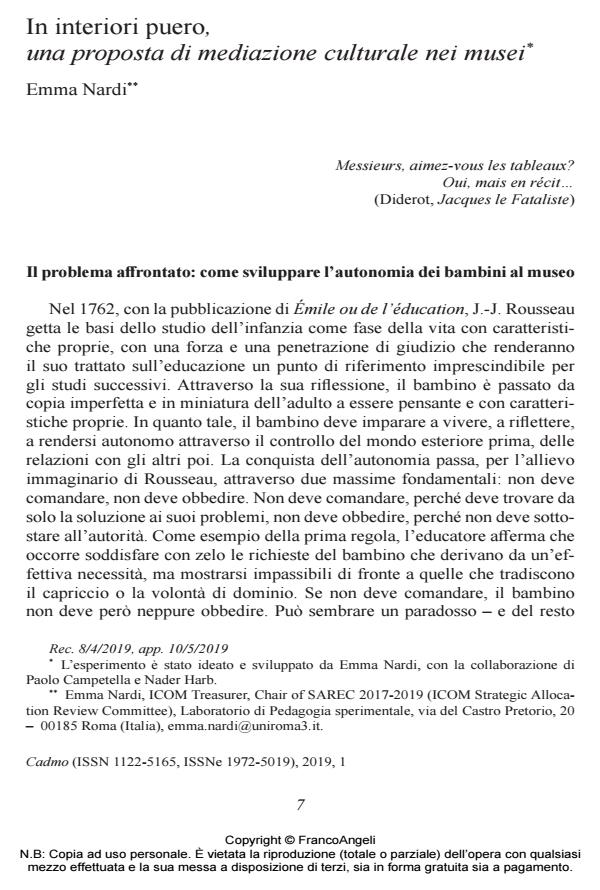In interiori puero, a research for cultural mediation in museums
Journal title CADMO
Author/s Emma Nardi
Publishing Year 2019 Issue 2019/1
Language Italian Pages 17 P. 7-23 File size 361 KB
DOI 10.3280/CAD2019-001002
DOI is like a bar code for intellectual property: to have more infomation
click here
Below, you can see the article first page
If you want to buy this article in PDF format, you can do it, following the instructions to buy download credits

FrancoAngeli is member of Publishers International Linking Association, Inc (PILA), a not-for-profit association which run the CrossRef service enabling links to and from online scholarly content.
The following contribution introduces the general considerations that inspired In interiori puero project, created by the Author in 2016 and implemented in 2017, in cooperation with Vatican Museums and Istituto comprensivo "Mar dei Caraibi". Starting from an analysis that shows how abstract the idea of museum is for children, the choice of Wenzel Peter’s Adam and Eve in the garden of Eden is motivated as an initial approach to the educational activity. It Is, then, explained how the project overturned the common organization of museums visit for primary school pupils, and suggested a method that relies on the acquisition of that autonomy and awareness that is indicated in the same name of the research.
Keywords: Museum education; art education; cultural mediation; primary school; handwriting.
Emma Nardi, In interiori puero, una proposta di mediazione culturale nei musei in "CADMO" 1/2019, pp 7-23, DOI: 10.3280/CAD2019-001002